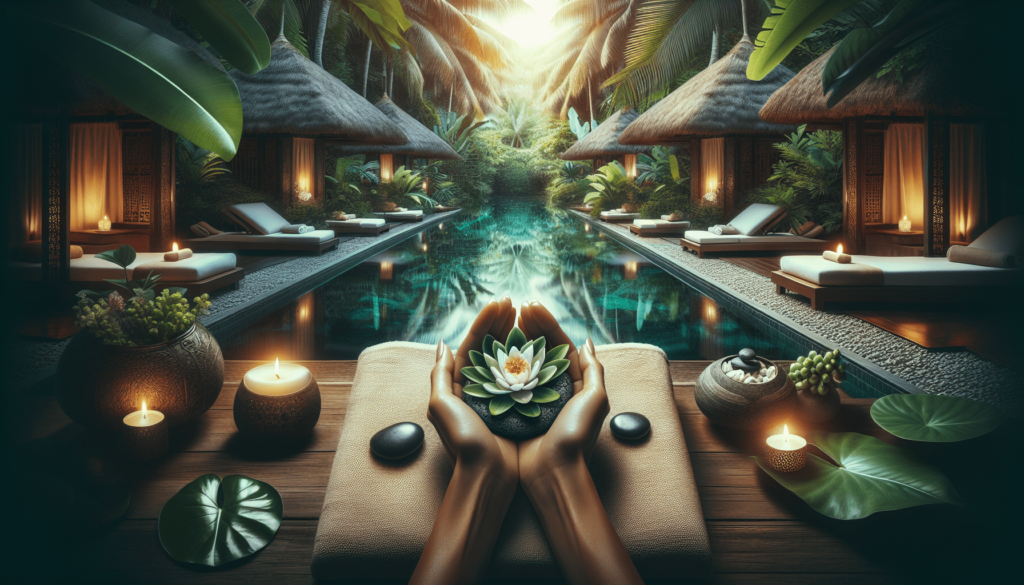Are you curious about the amount of time you need to dedicate to a wellness retreat? Well, let’s dive into it. Discovering the minimum stay duration at a wellness retreat can help you plan your escape from the everyday hustle and bustle. Whether you’re seeking a quick rejuvenation or an immersive experience, understanding this aspect will allow you to make an informed decision. So, let’s explore the world of wellness retreats and find out just how much time you need to embark on this transformative journey.
What is the minimum stay at a wellness retreat?
If you’re considering going on a wellness retreat, you may be wondering how long you need to stay to fully immerse yourself in the experience and reap the benefits. The minimum stay at a wellness retreat can vary depending on a few key factors such as the type of retreat, location, program duration, and program intensity. In this article, we will explore these factors in detail to help you determine the ideal length of stay for your wellness retreat.
Factors Determining Minimum Stay
Retreat Type
Different types of wellness retreats have varying requirements for the minimum stay. For example, if you’re interested in a medical spa retreat, the minimum stay may be longer to allow for consultations, treatments, and recovery time. On the other hand, yoga retreats or fitness retreats may have shorter minimum stays since they focus more on physical activity and relaxation.
Location
The location of the wellness retreat can also affect the minimum stay. If the retreat is located in a remote or exotic destination, the minimum stay may be longer to account for travel time and to fully experience the surroundings. On the other hand, if the retreat is located closer to home, a shorter minimum stay may be possible.
Program Duration
The duration of the wellness retreat program itself is another factor to consider. Some retreats offer shorter programs that can be completed within a few days, while others have longer programs that span weeks or even months. The minimum stay will depend on the specific program duration and the goals you hope to achieve during your retreat.
Program Intensity
The intensity of the program also plays a role in determining the minimum stay. If the retreat program includes intensive workshops, classes, or therapies, a longer stay may be required to fully participate and benefit from these activities. On the other hand, if the program is more relaxed and self-guided, a shorter stay might be sufficient.

Types of Wellness Retreats
Wellness retreats come in a variety of forms, each focusing on different aspects of well-being. Understanding the different types of retreats can help you choose the one that suits your needs and preferences. Some common types of wellness retreats include:
Medical Spa Retreats
Medical spa retreats combine medical treatments with spa and relaxation activities. These retreats often have a longer minimum stay to allow for medical consultations, treatments, and recovery. They are ideal for those seeking both physical and mental rejuvenation under the guidance of medical professionals.
Yoga Retreats
Yoga retreats focus on the practice of yoga, meditation, and mindfulness. These retreats offer a serene environment to connect with your body and mind. While some yoga retreats may have shorter minimum stays, others may require a longer commitment to fully immerse yourself in the practice and experience the benefits of sustained yoga practice.
Fitness Retreats
Fitness retreats are designed to help participants improve their physical fitness levels through various activities such as hiking, biking, and group fitness classes. These retreats often offer shorter minimum stays as they focus on intense physical training within a shorter timeframe.
Rejuvenation Retreats
Rejuvenation retreats aim to revitalize and renew the body and mind through a combination of relaxation, spa treatments, and wellness activities. These retreats can have varying minimum stays depending on the extent of rejuvenation desired and the program offered.
Benefits of Extended Stays
While shorter retreats can provide a taste of the wellness experience, extended stays offer a range of benefits that make them worth considering. Here are some advantages of longer retreats:
Deep Transformation
A longer stay at a wellness retreat allows for a deeper transformation of body and mind. By immersing yourself in the retreat environment for an extended period, you have more time to delve into the practices, routines, and therapies offered, leading to a profound and lasting change.
Develop New Habits
Extended stays give you the opportunity to develop and establish new habits that promote overall well-being. Whether it’s maintaining a consistent yoga or meditation practice, adopting a healthier diet, or incorporating regular exercise into your routine, a longer retreat allows you to solidify these habits and take them home with you.
Long-lasting Results
The longer you stay at a wellness retreat, the more time you have to integrate the teachings and practices into your daily life. This increased duration enhances the likelihood of sustaining the positive changes and results long after the retreat ends.
Cultivate Relationships
One of the unique aspects of wellness retreats is the sense of community and connection that is often fostered among participants. A longer stay gives you more time to build meaningful relationships with like-minded individuals, creating a support network that can continue to inspire and motivate you even after the retreat.

Short-Term Retreats
If you have limited time available, short-term wellness retreats can still be a worthwhile experience. Here are some examples of short-term retreats and their typical durations:
1-Day Retreats
For those with only a day to spare, 1-day retreats can offer a refreshing break from daily life. These retreats often focus on specific themes or activities and are a great way to dip your toes into the wellness retreat experience.
Weekend Retreats
Weekend retreats typically span from Friday evening to Sunday afternoon and provide a balance between relaxation and engagement. These retreats are ideal for those looking for a quick getaway and a chance to recharge over the weekend.
3 to 7-Day Retreats
Retreats lasting from 3 to 7 days provide a more immersive experience, allowing participants to engage in a broader range of activities and explore deeper aspects of wellness. These retreats offer a good balance between time commitment and meaningful experience.
10-Day Retreats
If you have a bit more time available, a 10-day retreat can provide an enriching and transformative experience. These retreats allow for a more in-depth exploration of the retreat’s offerings and a deeper connection with yourself and others.
Long-Term Retreats
For those seeking a more profound and lasting impact, long-term retreats offer a unique opportunity for personal growth and self-discovery. Here are some examples of long-term retreats and their typical durations:
2-Week Retreats
A 2-week retreat allows for a more comprehensive exploration of the retreat’s offerings and ample time for personal reflection. These retreats are ideal for those seeking a transformative experience while still accommodating time constraints.
30-Day Retreats
A 30-day retreat provides an extended period to fully immerse yourself in the retreat’s practices and teachings. This length of stay allows for a deep integration and significant progress in personal well-being and growth.
3-Month Retreats
A 3-month retreat enables a more profound and sustained transformation. It provides an opportunity for deep psycho-spiritual work and personal development, allowing you to explore new depths of self-awareness and healing.
6-Month to 1-Year Retreats
For those seeking a truly transformative experience and a complete break from their daily lives, longer retreats of 6 months to 1 year offer a unique opportunity for profound personal growth and spiritual exploration.
Why Longer Retreats?
While short-term retreats can provide a refreshing break and a taste of the wellness experience, longer retreats offer several advantages. Here are some reasons why longer retreats can be beneficial:
Expanded Learning
A longer stay provides ample time to absorb and integrate the teachings and practices offered at the retreat. This extended exposure allows for a more comprehensive understanding and application of the knowledge gained, leading to a more profound personal transformation.
Deeper Integration
The longer you stay at a retreat, the more opportunity you have to integrate the retreat’s teachings into your everyday life. By immersing yourself in the retreat’s environment, routines, and practices, you can more effectively carry those lessons forward and apply them long after the retreat ends.
Holistic Approach
Many wellness retreats take a holistic approach to well-being, addressing physical, mental, and emotional aspects of health. Longer stays allow for a more in-depth exploration of each aspect, providing a more comprehensive and balanced wellness experience.
Build Skills
If you’re interested in acquiring new skills or deepening your existing ones, longer retreats offer the time and space to do so. Whether it’s developing your yoga practice, learning new meditation techniques, or honing your artistic abilities, a longer retreat allows for focused skill-building in a supportive environment.
Retreat Costs
When considering the minimum stay at a wellness retreat, it’s important to factor in the associated costs. Retreat costs typically include accommodation, program fees, travel expenses, and any additional services or amenities offered. The longer the stay, the higher the costs generally tend to be. However, longer retreats often provide more comprehensive and transformative experiences, making them a worthwhile investment in your well-being.
Accommodation
Accommodation costs can vary depending on the retreat location, type of accommodation, and level of luxury offered. Retreats often provide a range of options, from shared dormitories to private villas, catering to different budgets and preferences.
Program Fees
The fees for the retreat program itself can vary greatly depending on the type of retreat, program duration, and the level of expertise of the facilitators. More intensive and specialized programs may come with higher fees.
Travel Expenses
Travel expenses, including flights, transportation to and from the retreat location, and any necessary visas or travel insurance, should also be considered when planning your retreat. Longer stays may require more extensive travel arrangements, potentially increasing costs.
Additional Services
Some retreats offer additional services such as spa treatments, coaching sessions, or nutritional consultations for an extra fee. These services can enhance your retreat experience but should be factored into the overall cost.
Conclusion
The minimum stay at a wellness retreat can vary depending on factors such as the retreat type, location, program duration, and program intensity. Short-term retreats ranging from 1-day to 10-day programs provide a refreshing break and an introduction to wellness practices. Longer retreats, such as 2-week or 30-day programs, offer a more immersive experience, allowing for deeper transformation and personal growth. Ultimately, the ideal length of stay depends on your individual goals, availability, and budget. By considering these factors and exploring the different types of wellness retreats available, you can choose the retreat that best suits your needs and embark on a transformative journey towards improved well-being.






